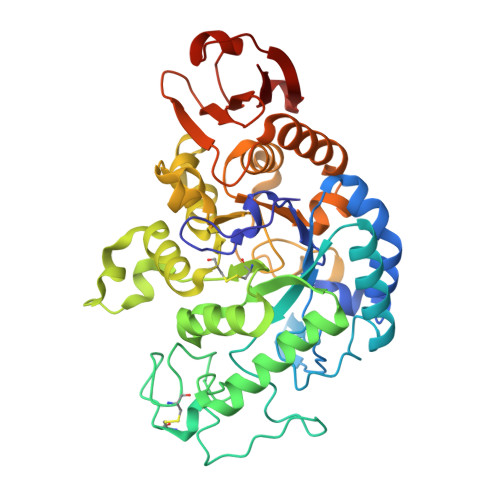Roles of catalytic residues in alpha-amylases as evidenced by the structures of the product-complexed mutants of a maltotetraose-forming amylase.
Hasegawa, K., Kubota, M., Matsuura, Y.(1999) Protein Eng 12: 819-824
- PubMed: 10556241
- DOI: https://doi.org/10.1093/protein/12.10.819
- Primary Citation of Related Structures:
1QI3, 1QI4, 1QI5, 1QPK - PubMed Abstract:
The crystal structures of the four product-complexed single mutants of the catalytic residues of Pseudomonas stutzeri maltotetraose-forming alpha-amylase, E219G, D193N, D193G and D294N, have been determined. Possible roles of the catalytic residues Glu219, Asp193 and Asp294 have been discussed by comparing the structures among the previously determined complexed mutant E219Q and the present mutant enzymes. The results suggested that Asp193 predominantly works as the base catalyst (nucleophile), whose side chain atom lies in close proximity to the C1-atom of Glc4, being involved in the intermediate formation in the hydrolysis reaction. While Asp294 works for tightly binding the substrate to give a twisted and a deformed conformation of the glucose ring at position -1 (Glc4). The hydrogen bond between the side chain atom of Glu219 and the O1-atom of Glc4, that implies the possibility of interaction via hydrogen, consistently present throughout these analyses, supports the generally accepted role of this residue as the acid catalyst (proton donor).
Organizational Affiliation:
Institute for Protein Research, Osaka University, Suita, Osaka 565-0871, Japan.

















